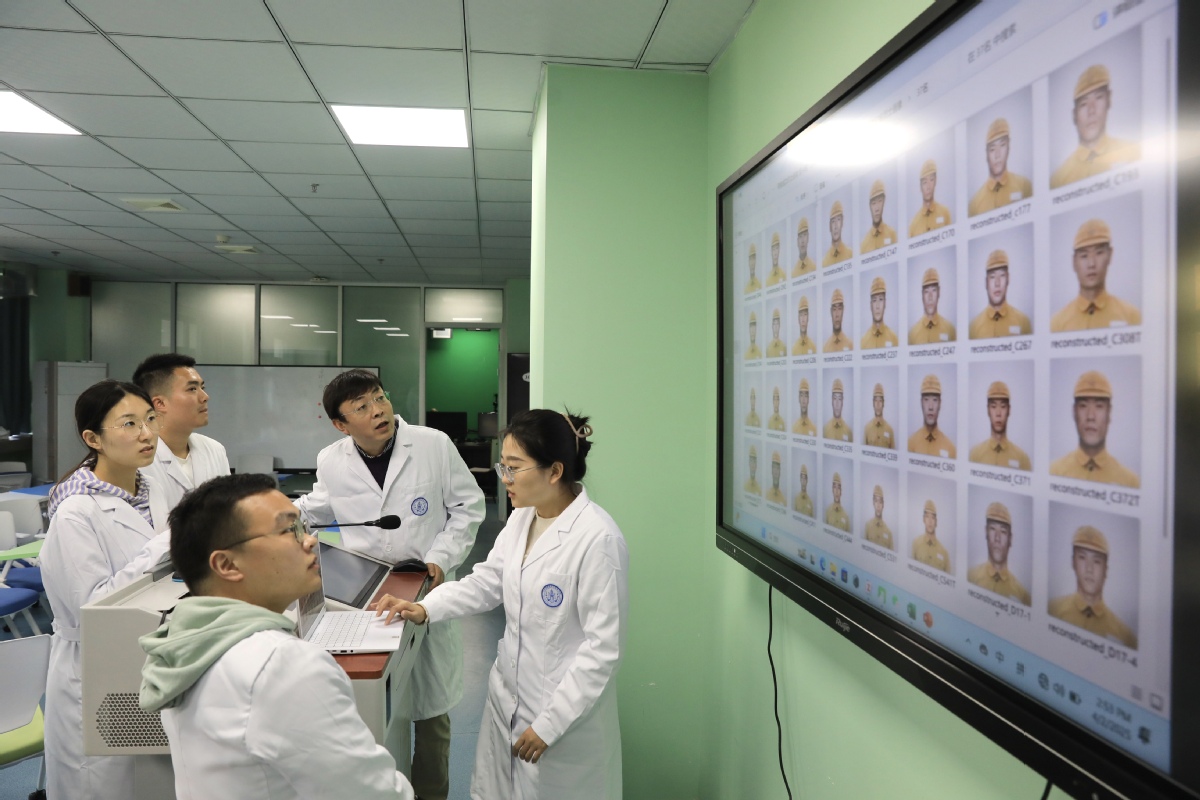
A special technique, which synthesizes facial images from skull images using a deep learning model, has been used by researchers at Sichuan University to reconstruct the faces of unidentified revolutionary martyrs, helping their living relatives to find closure after decades of speculation.
Over the past year, the faces of 205 martyrs have been reconstructed, said Liang Weibo, a professor at Sichuan University's West China School of Basic Medical Sciences and Forensic Medicine, adding that the images of 57 martyrs have been presented to their kin.
Liang's team, in collaboration with the university's School of Computer Science and faculty and students of other institutions, used generative artificial intelligence for the craniofacial reconstruction.
READ MORE: 8 more returned remains of Chinese martyrs identified
The AI-powered technique was originally developed to address forensic challenges in identifying unidentified remains, and its application to reconstruct the faces of revolutionary martyrs is an unexpected but meaningful extension of the technology, Liang said.
In March 2024, the researchers joined a monthlong mission at the Licheng Revolutionary Martyrs Cemetery in Jinan, Shandong province, where they extracted DNA samples and conducted 3D laser scans of the skulls of unidentified soldiers.
Their work was aimed at supporting a program launched by Jinan's veteran affairs bureau to identify martyrs who died during the War of Liberation (1946-49) and reconnect them with their families.
"DNA extraction helps locate martyrs' relatives, while facial reconstruction honors their sacrifice as well as offers solace to their family members, many of whom had no photos to help them remember their lost loved ones," Liang said.
The team's first success involved a 24-year-old martyr named Wang Jianren, and the reconstructed photo was delivered to Wang's nephews before Qingming Festival last year. They brought the photo to their grandparents' grave and said: "You always missed your second son. He has been found, and here's his photo. Now you can rest in peace."
Liu Shuxiu, 81, daughter of martyr Liu Dehuai, received her father's photo before this year's Qingming Festival. She repeatedly stroked the photo with her fingers and pressed it against her face, tears streaming down her cheeks. She recalled that she was only 4 when her father died.
Li Yuan, an associate professor at the medical school, said the team first created digital images of skulls using 3D scanning methods, then they added soft tissue using AI, and finally, they conducted realistic processing of the facial features.
ALSO READ: Guideline to develop AI-backed Chinese language database
Currently, the team is refining the images by incorporating typical facial features and clothing styles of Shandong people from that era to enhance accuracy, Li added.
Xue Jiaming, a PhD scholar at the school, said a dozen more skulls remain to be restored. They were fragmented, making the restoration extremely challenging. "Most skeletal remains show clear signs of bullet wounds and other injury marks, reflecting the brutality of the war," he said.
Many of the martyrs were around age 20 when they died, based on the condition of their teeth. "They were at the beginning of the most promising years of their lives, and yet they fought and sacrificed their lives for the future of the country. Their spirit truly moves me," he added.
pengchao@chinadaily.com.cn


